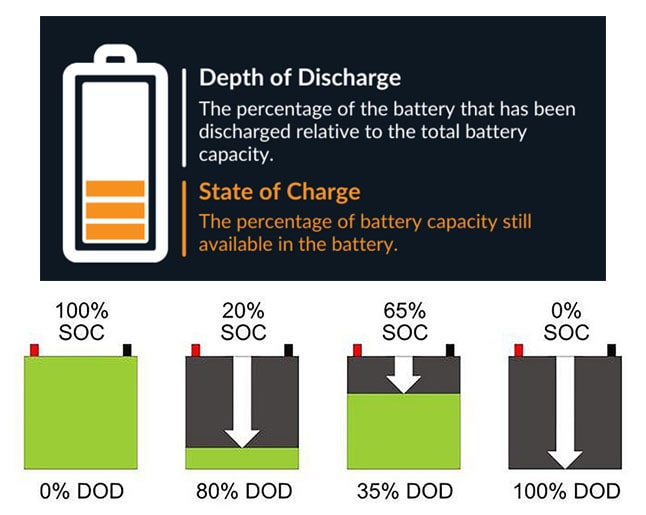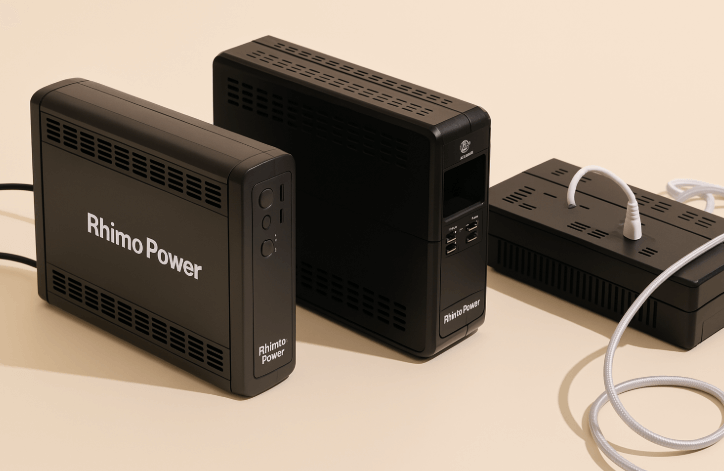When talking about batteries—especially for solar storage, electric vehicles, or backup power—Depth of Discharge (DoD) is a term that often comes up. But what exactly does it mean, and why is it so critical for battery performance and lifespan?
🔋 Depth of Discharge Meaning
Depth of Discharge (DoD) refers to the percentage of a battery’s capacity that has been used. For example, if you use 40% of a battery’s total capacity, the DoD is 40%. The remaining 60% is the State of Charge (SoC).
Example:
If you have a 100Ah battery and you consume 50Ah, the depth of discharge is 50%.
- 0% DoD = fully charged
- 100% DoD = fully discharged
Why Deep Discharge Can Be Harmful
Battery deep discharge, or regularly using the battery to a high percentage of its capacity (e.g., 80–100% DoD), can significantly reduce the battery’s cycle life. This is especially true for lead-acid, AGM, and gel batteries.
Each battery has a recommended maximum DoD for optimal performance. Exceeding this can lead to:
- Faster capacity degradation
- Shorter lifespan
- Potential battery failure
DoD vs. Cycle Life
There’s a direct relationship between DoD and the number of cycles a battery can deliver. The deeper the discharge, the fewer cycles you’ll get.
| Depth of Discharge | Estimated Cycle Life (Lead-Acid) |
|---|---|
| 30% | ~1,200 cycles |
| 50% | ~600 cycles |
| 80% | ~300 cycles |
| 100% | ~200 cycles |
Other Factors Affecting Battery Life
Besides DoD, several other conditions can affect battery health:
- Temperature: High heat accelerates chemical wear; freezing conditions reduce charge efficiency.
- Charging Practices: Overcharging or fast charging without a proper controller can cause damage.
- Maintenance: Regular maintenance helps especially for lead-acid and flooded batteries.
Different Battery Types, Different Tolerances
Not all batteries are created equal when it comes to tolerating deep discharges:
- Lead-acid: Prefer shallow cycling; high DoD greatly shortens life.
- AGM/Gel: Better than standard lead-acid, but still degrade with deep discharges.
- Lithium-ion: Most resistant to deep discharge with high cycle life (often rated for 80–90% DoD).
Why Off-Grid Solar Batteries Have High DoD and Long Cycle Life
In off-grid solar systems, batteries must store enough power to supply the home or site through nights and cloudy days. This requires batteries that can safely discharge a large portion of their energy without degrading quickly.
That’s why most modern off-grid systems use lithium iron phosphate (LiFePO4) batteries, which offer:
- High DoD: Often 80–100% without harming the battery.
- Long cycle life: 3,000 to 6,000+ full cycles.
- Stable voltage: Performance stays consistent even as battery drains.
- Low maintenance: No watering or equalization needed.
Best Practices for Managing DoD
- Stick to the manufacturer’s recommended DoD.
- Use a Battery Management System (BMS) for lithium systems.
- Install batteries in a cool, well-ventilated space.
- Charge regularly and avoid 100% discharges unless designed for it.
Final Thoughts
Understanding what is depth of discharge and managing it properly can significantly extend the life and performance of your battery system. Whether you’re powering a solar setup, RV, or home backup, keeping DoD in check means better returns on your energy investment.
Keywords: depth of discharge meaning, battery deep discharge, what is deep discharge


